Hopperton Station Gallery 2: July 1959 - April 2016
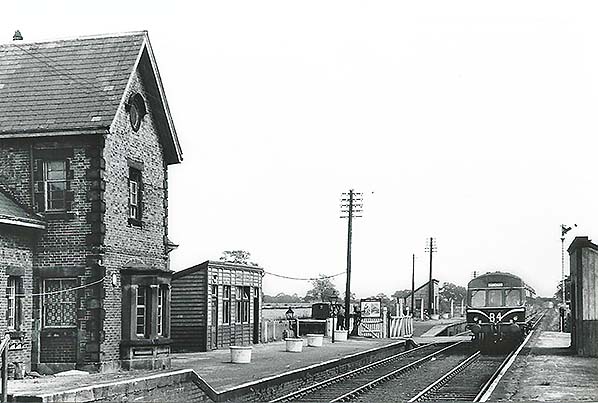
Looking east from the down platform of Hopperton station on 17 July 1959 as a Harrogate-bound Metro-Cammell DMU approaches. The station closed to passengers in September 1958, only a few weeks after the diesel services were introduced. The unconventional layout of the station can be appreciated on this photograph. The main building is on the left, a lofty brick-built structure of a style found also at Cattal, Marston Moor and Poppleton; all four of these buildings survive at the time of writing (summer 2016). Beyond this building is a waiting room and office block added by the North Eastern Railway. In front of these buildings is a low platform, but it rises steeply on the far left to become the goods dock. Immediately before the level crossing over the A1 London-Edinburgh road the exposed frame is located just beside the telegraph pole; the porter/signalman who can be seen at the foot of the pole is probably about to put the signal back behind the DMU prior to reopening the gates. The cable connection between the pole and the timber building indicates that the block instruments are housed there. York-bound passenger trains called at the up platform, of standard height, beyond the level crossing, where an NER timber pent-roof waiting shed can be seen. A similar shed is on the extreme left on the down platform, on which the photographer is standing. There is no evidence that the station has closed, as some of the oil lanterns are still in place, the board beyond the crossing is displaying posters, and the nameboard on the up platform has not been removed. Today the view from this point is dominated by two large road bridges carrying the A1(M) and the earlier A1 (now the A168) – this latter bridge replaced the level crossing in 1962. (Thanks to Neil Mackay for his comments on the frame and signalling.)
Photo
by HB Priestley from James Harwood collection
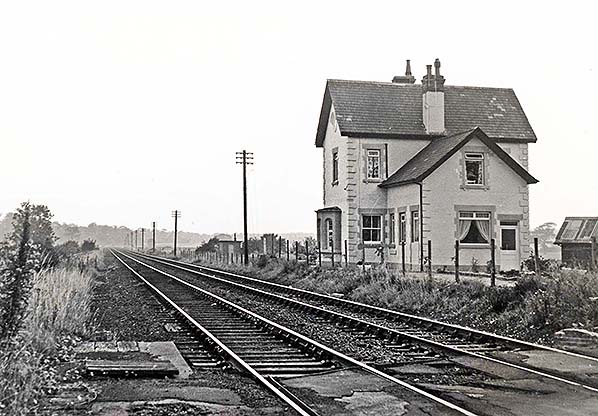
Hopperton station looking west in August 1969 from the former A1 level crossing. Whilst the other three stations that closed on this line in 1958 remained relatively intact at the time of this photograph, the down platform that was formerly ahead, left of the rails, has been demolished; the low platform in front of the main building on the opposite side of the rails has had its edge stones removed, but the platform itself appears to be in place behind the rather flimsy fence. The cattle dock which continued beyond the low platform, and the goods sidings have been removed. A platelayers’ hut still stands in the old goods area. The old station house in 1969 is privately owned and it has been smothered in white paint; almost half a century later the present owner (2016) has removed this inappropriate decoration and cleaned the brickwork, restoring dignity to the building.
Photo by John Mann
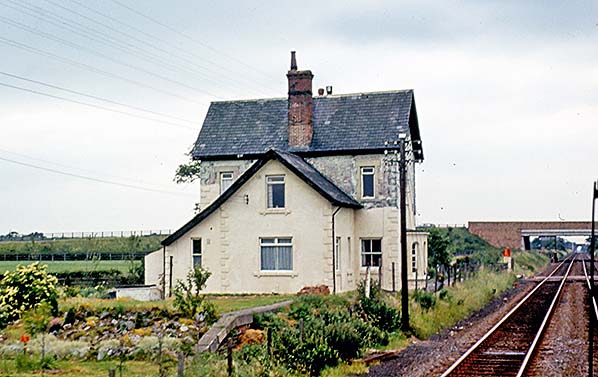
Hopperton station, looking east from a Harrogate-bound train in June 1973. The station closed to passengers in 1958 and to goods in 1962, and since 1967 the station building has been privately owned. The ramp of the old cattle dock is seen in the left foreground. The level crossing, formerly used by the A1 road, is now used only by farm vehicles, and the road has been diverted over the modern bridge. The up (York-bound) platform was immediately beyond the level crossing. Six months after this photograph was taken, single-line working would be introduced between Cattal and Knaresborough, with up track removed by 3 March 1974.
Photo
by Alan Young
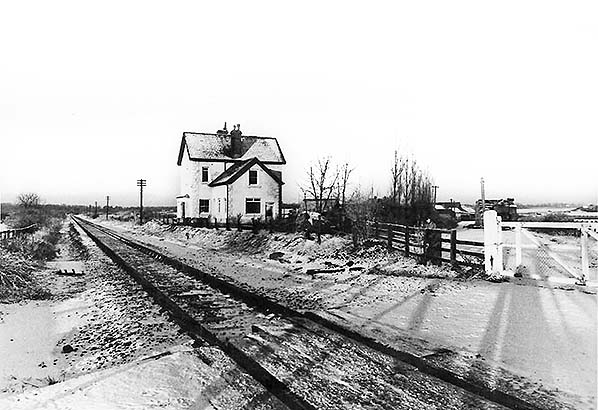
The site of Hopperton station, looking west from the level crossing in the winter of 1975-76. The railway was singled in 1973-74. The down (Harrogate-bound) platform was formerly to the left of the surviving track, and a low platform used to extend from the crossing in front of the station house. Until the 1970s/80s telegraph poles accompanied British railway lines, and several of them survive on this photograph. The cross-pieces carrying the wires were normally fixed on the London side of the poles. Today (2016) the Aberdeen-Inverness line is about the only one on the national railway system still to be lined by telegraph poles.
Photo from James Harwood collection
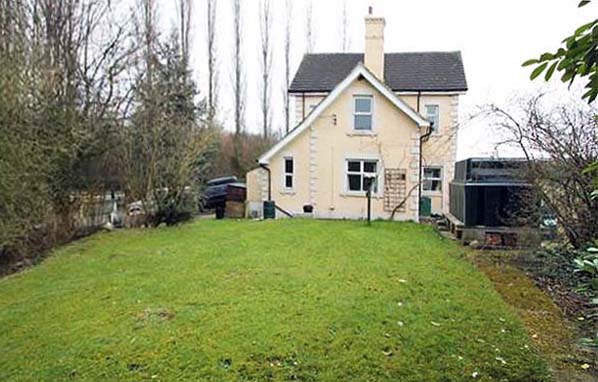
The station building at Hopperton looking east c2010; the railway is to the right of the building.
Photo
from Rightmove (Properties for sale and to rent in the UK)
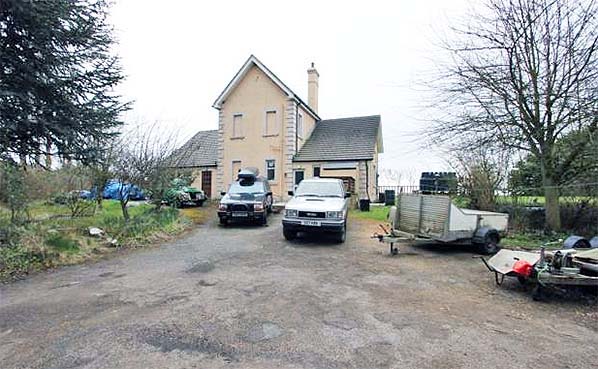
The station building at Hopperton looking south c2010. The railway is beyond the building.
Photo
from Rightmove (Properties for sale and to rent in the UK)
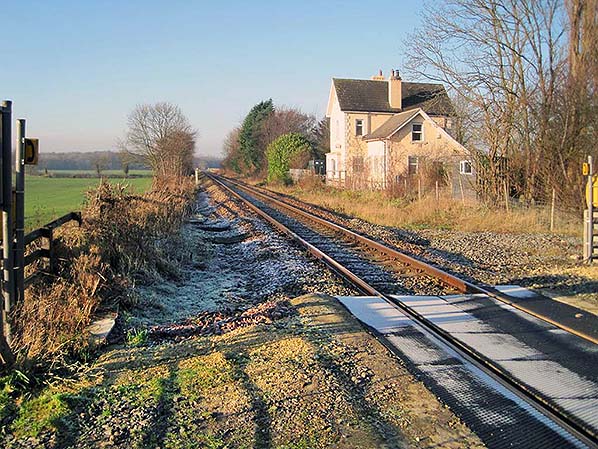
Hopperton station in December 2014, looking west across the level crossing used by the A1 road until 1962 but now just a farm track. The station building is in residential use, its brickwork concealed by a coat of paint which will soon be removed. The down (Harrogate-bound) platform was formerly on the left. Two railway tracks originally passed through the station site, but in December 1973 single-track working was brought in between Cattal and Knaresborough, and the redundant track was removed early the following year.
Photo
by Nigel Thompson reproduced from Geograph under creative commons licence
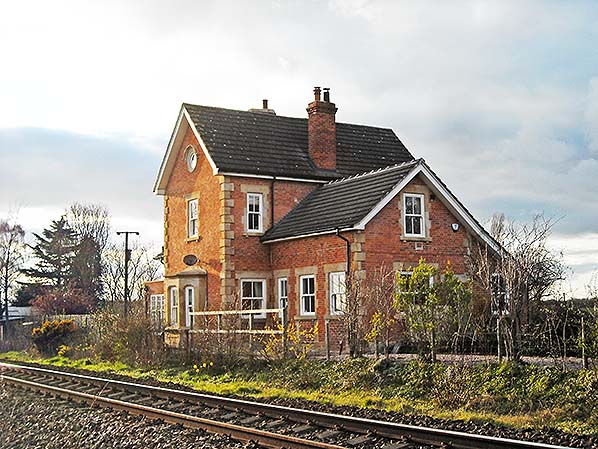
The main building of Hopperton station, looking north-west from the site of the former down (Harrogate-bound) platform in April 2016. The handsome brick-built structure has been restored to its original form of red brick with stone quoins following a period during which it was painted white (1973 photo). The building might appear unnecessarily large and imposing for a minor station, but it is likely that its role in serving the wealthy Stourton family of Allerton Park justified this extravagance. Poppleton, Marston Moor and Cattal were given similar buildings.
Photo
by Alan Young
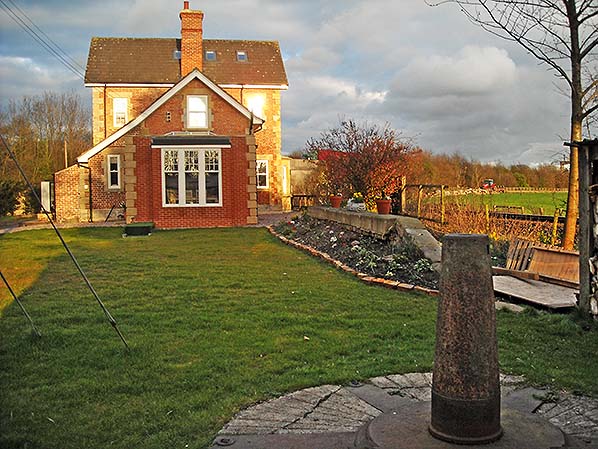
Looking east towards Hopperton station building in April 2016. In the foreground is the base of the yard crane, and the platform beyond was the cattle dock; both of these features can be seen in the background in photograph, looking west in May 1959. At the time of this photograph the renovation of the station is ongoing.
Photo
by Alan Young
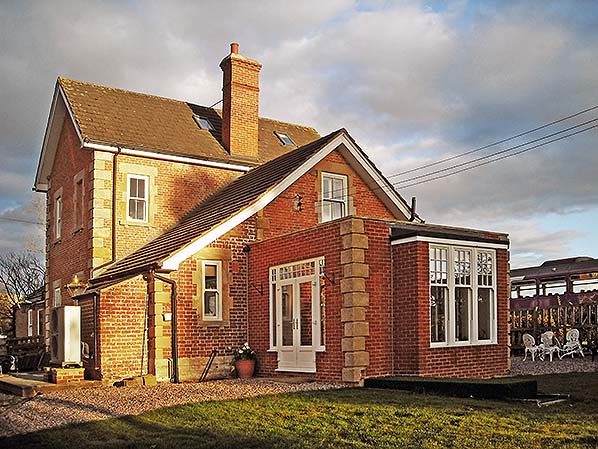
Hopperton station building looking south-east in April 2016. A ‘Pacer’ DMU can be
seen beyond the fence.
Photo
by Alan Young
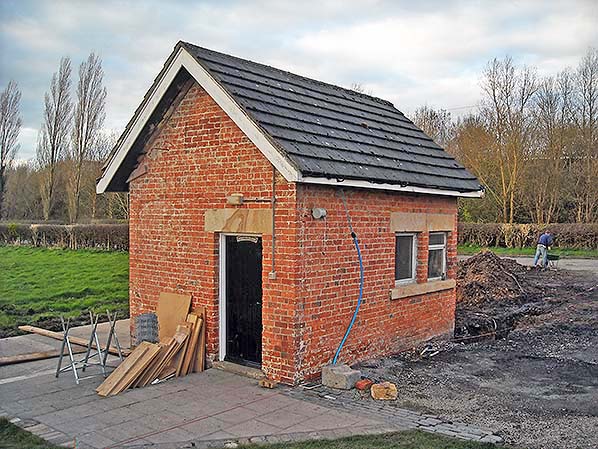
The restored weigh office stands at the north side of the station site. The road, far right, was the A1 until it was diverted away from the level crossing in 1962. At the time of these photographs of April 2016 the house and outbuildings are still undergoing renovation.
Photo
by Alan Young
Click on thumbnail to enlarge

















 Home Page
Home Page